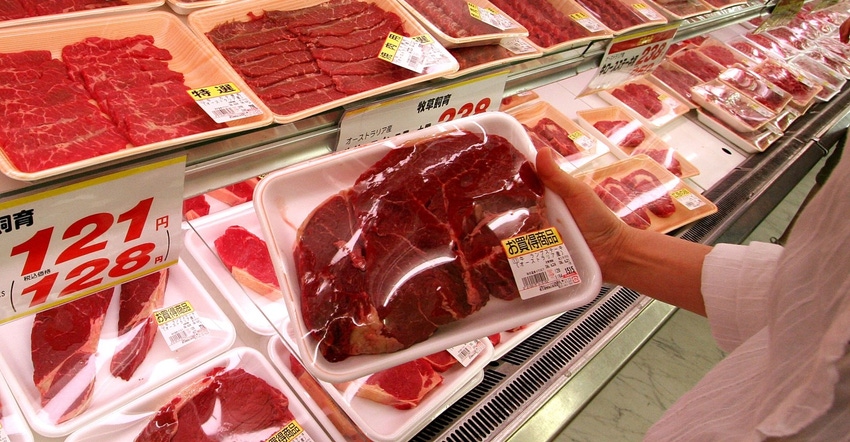
United States Trade Representative Katherine Tai and Deputy United States Trade Representative Sarah Bianchi held a virtual meeting December 21 with Japan’s Minister of Foreign Affairs Hayashi Yoshimasa to discuss the status of consultations to adjust the applicable safeguard trigger levels of Japan’s beef safeguard to higher levels for U.S. beef exports to Japan.
This past year, Japan’s imports of U.S. beef exceeded the safeguard threshold of 242,000 mt on March 17, approaching the end of the Japanese fiscal year (March 31). This triggered a higher tariff rate of 38.5% (up from 25.8%) on U.S. beef muscle cuts, which was in effect for 30 days – from March 18 through April 16. After this 30-day period passed, the tariff rate for U.S. beef declined to 25%, as provided in the Japan-U.S. Trade Agreement to offer a level playing field for what other nations receive under the Comprehensive and Progressive Agreement for Trans-Pacific.
“But for our competitors that are members of CPTPP, that 25% tariff rate went into effect on April 1,” explains U.S. Meat Export Federation Economist Erin Borror.
The next round of beef tariff rate reductions under both CPTPP and the Japan-U.S. agreement is set for April 1, 2022. “But unless the safeguard threshold for U.S. beef is adjusted, we expect a similar scenario in March in which U.S. beef temporarily faces a significantly higher tariff rate (30% this time) and the next tariff rate reduction for U.S. beef (down to 24%) is delayed,” Borror adds.
In fact, USMEF projects that the safeguard will be triggered every year unless adjustments are made to the threshold. “This distorts the market and puts U.S. beef at a disadvantage, not only due to product clearing under the higher tariff rate, but also because some importers will delay purchases to avoid the period in which the higher rate is in effect,” Borror explains. “The timing of the tariff rate increase is also unfortunate, as it impacts purchases leading up to Japan's Golden Week holidays – a period of high beef demand.”
Japanese importers are already increasing beef imports from CPTPP trading partners such as Canada, New Zealand and Mexico, in part because there is essentially zero risk of triggering the beef safeguard included in CPTPP. The same is true for European beef, which is at no risk of triggering the safeguard in the Japan-EU FTA, Borror explains.
With tight global beef supplies, Japanese buyers are competing with those around the world – especially South Korea and China – for high-quality beef, and Japan's 25% tariff rate is still the highest among major importers. “The added threat of a higher safeguard tariff is a further burden for importers and for Japanese consumers,” she says.
At current threshold levels, the safeguard diminishes one of the main goals and attributes of the Japan-U.S. Trade Agreement, which was to put U.S. beef and other U.S. agricultural products on a level playing field with our competitors in Japan.
“USMEF is encouraged by the consultations with Japan and we look forward to further updates from USTR,” Borror concludes.
About the Author(s)
You May Also Like






